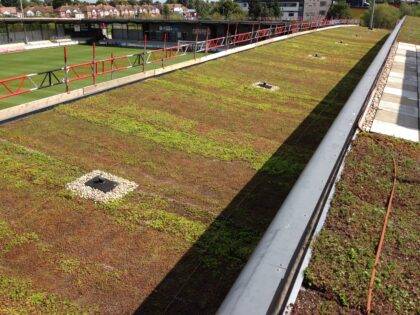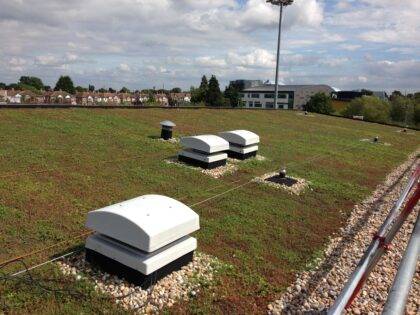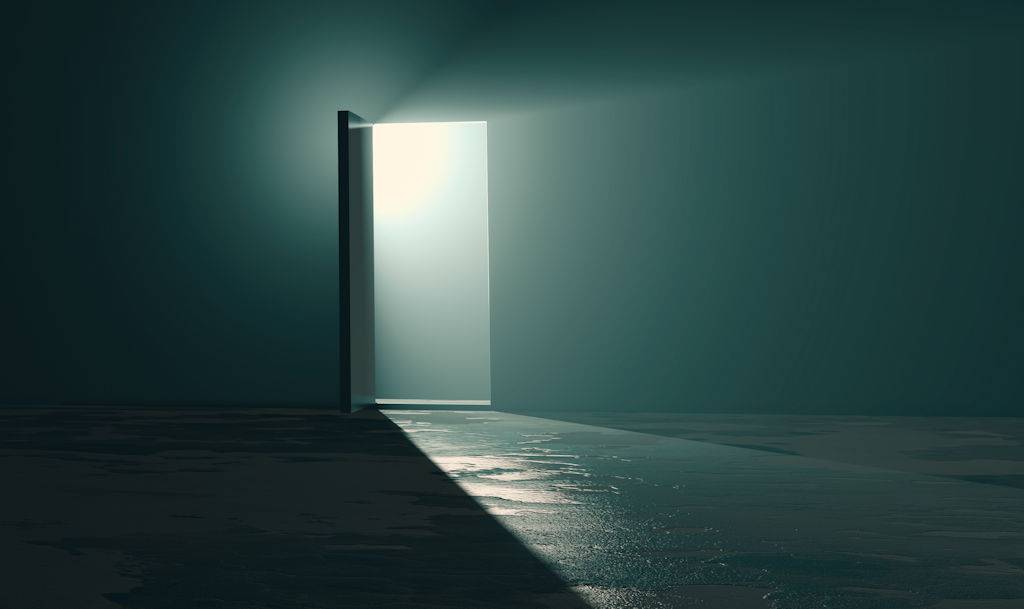 Background
Background
Dartford Football Club is a semi-professional football club based in Dartford, Kent. The club currently participates in the National League South – the sixth tier of English football. The club play at Princes Park stadium, which boasts a spectator capacity of 4100.
The stadium is one of the most ecologically sound ever built. The pitch level is sunk two meters below the external ground level to reduce noise and light pollution to the surrounding area. The stadium roof boasts a sedum roof blanket – a living green roof which also provides a natural air filtration system. Solar panels on the roof serve the community changing areas and the hot water storage cylinders for the public toilets, and a water recycling system serves the toilets within the clubhouse – rain water being collected in two large ponds at the edge of the stadium grounds for this purpose. Low energy lighting is used, and the addition of increased fabric insulation provides the clubhouse with better thermal retention and efficiency. Even the earth excavated during construction was reused for landscaping the external courtyard areas around the stadium – ensuring that no resources were wasted.
The Project
Access Irrigation were responsible for the design and supply of the Dartford FC Green Roof Irrigation system watering the substantial green roof running all the way around the rectangular perimeter of the football pitch.
The system was fully automated, using a Heron Ma-6 irrigation controller (acting as the ‘brain’ of the system). This controller has a large digital display for easy, accurate programming and a very high level of reliability, including featuring a permanent memory to ensure that programmes are never lost due to power failures. The controller also features a pump freeze facility, which in conjunction with a float switch will suspend the programme in the event of a failure in the water supply, thus protecting the pump from running dry. To prevent operation in wet weather, a rain sensor was included to prevent water wastage. The controller was also supplied with sophisticated software which allows a long delay between irrigation cycles. This delay option is ideal for extensive green roofs like this one, which are drought tolerant and mainly require watering typically during dry spells.
A Lowara 5HM single phase horizontal pump (acting as the ‘heart’ of the system) was used to provide a pressurised water supply, which was supplied pre-assembled and mounted on a powder-coated steel frame, together with the controller. A 1250 litre tank made from black HDPE was used to boost the available water supply and included a Type AB air gap to prevent backflow of the water into the mains water supply, to ensure that the system complied with the Water Regulations regarding backflow prevention. The controller and pump were housed in a secure room at ground level, their steel supporting frame secured beside the tank.
Four Hunter PGV Jar Top solenoid valves were used to split the system into four separate zones, allowing each zone to operate at a separate time – thus providing good water flow and efficient watering for each zone. Each valve was fitted with an adjustable pressure regulator, to ensure correct operating pressure for the dripline – each valve being housed in its own chamber for protection. The valves were positioned at various intervals – one at each side of the green roof to serve each zone – each side of the roof forming a separate zone. Each solenoid valve was connected to the controller via signal cable and connected to the pump & tank unit via 32mm MDPE supply pipe, which ran in a ring main formation along the entire periphery of the roof, this being connected to each of the four solenoid valves in order.
Each solenoid valve is opened and closed in sequence by the controller. When the first valve opens, the pump will detect a drop in pressure (due to pressure release from the open valve) and will begin to operate to boost the pressure back up again. This will cause water to flow through the first (now open) solenoid valve to water the first zone. The controller then closes the first valve, and immediately opens the next valve in the sequence and so on. Once the last valve has closed, the water flow will cease, pressure will build again, and the pump will then stop operating.
Permadrip-Pro dripline comprised each of the four separate zones watering the roof. Permadrip-Pro is a brown coloured dripline designed for landscape irrigation with a 16mm pipe diameter and a wall thickness of 1.2mm. The 1.6 L/h drip emitters are pressure compensating, ensuring uniform output over a wide pressure range and include a built-in anti-siphon mechanism, to prevent dirt being sucked into the drippers at the end of the irrigation cycle. The emitters also have a large inlet filter and unique, continually self-cleaning design, providing excellent resistance to blockages. Dripline of 0.3m dripper spacing was used. Two runs of dripline were used to run parallel around the entire periphery of the 6.5m wide roof, being laid out lengthways, each run spaced 3.3m apart. The exception being the middle section of roof at each opposite end of the stadium, which was 12m wide, and the middle section of roof running along the right-hand side which was 20m wide. 20mm LDPE pipe ran from each solenoid valve, along the width of the roof to act as the header pipe for the dripline comprising each zone, with Pozilock tee and elbow fittings used to connect each run of dripline to the header pipe. Foldover stopends were used to terminate the dripline runs at the end of each run, with the dripline being strapped to the sedum roof blanket to ensure that it remained securely in place, to enable completely even watering.
The Installation
Our experienced engineers were responsible for the installation, testing and commissioning of the Dartford FC Green Roof Irrigation system. This was carried out in phases according to actual site conditions and the program of works. Once the installation was complete, we provided the client with full instructions regarding the operation of the system, enabling them to competently manage and maintain the system by utilising its full potential.

The Result
Our green roof irrigation system has helped to promote the club’s green credentials, resulting in a building that is substantially more environmentally friendly and energy efficient – with the thriving green roof helping to prevent heat loss, acting as a layer of protection for the roof against the elements, and providing the whole stadium with cleaner, healthier air. Moreover, the green roof also actively promotes local biodiversity by attracting insects and birds to the area, whilst also enabling the building to blend in with the natural landscape from above. We are delighted with the result and are proud to play our part in helping the Dartford FC Green Roof Irrigation system to create a cleaner, greener environment for players, spectators, and the local community to enjoy.
